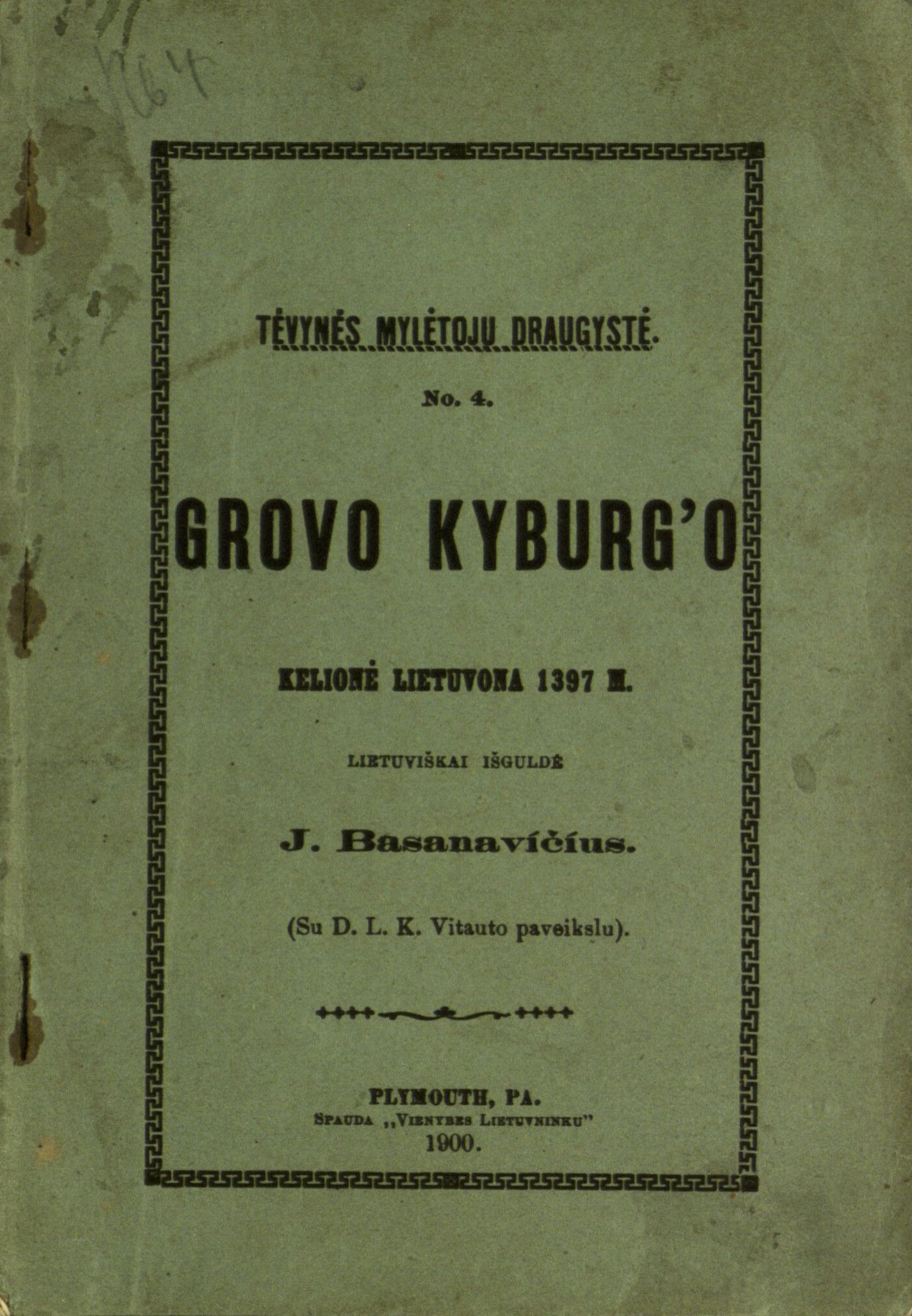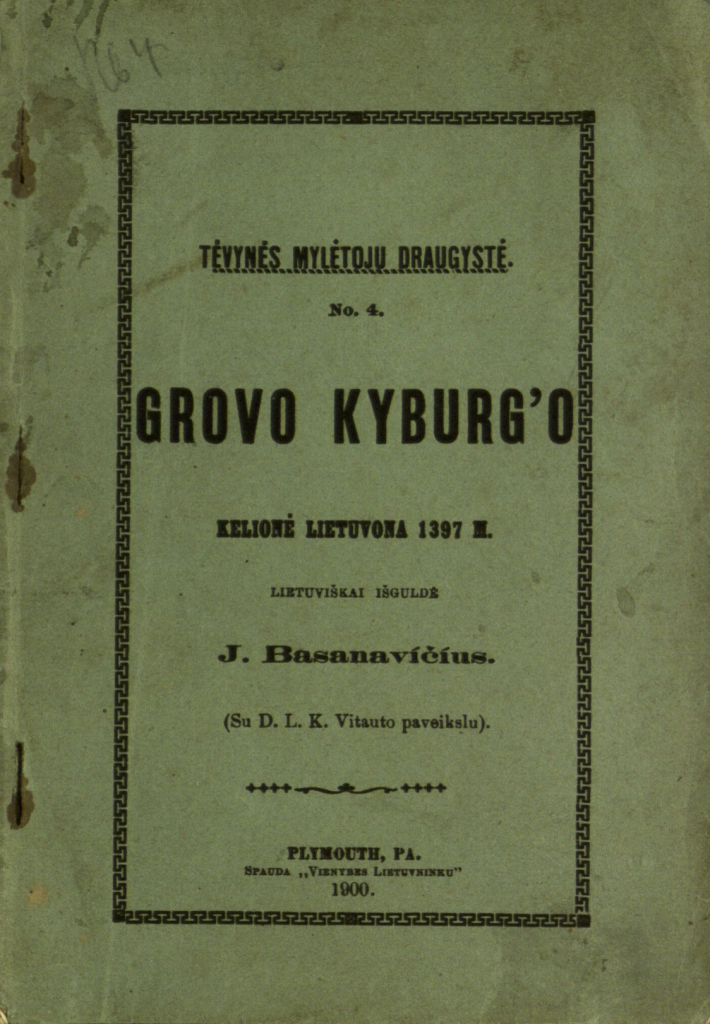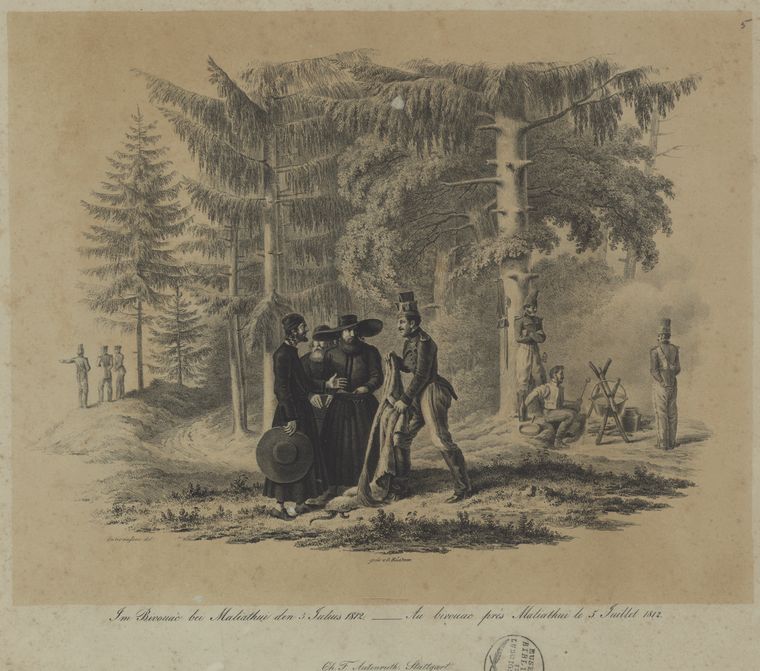
Count Konrad Kyburg’s journey to Lithuania in 1397
Due to the lack of travelogs detailing the historical and cultural landscape of ancient Lithuania, 19th-century attempts were made to employ fantasy rather than historical sources and their critique. A prominent example is the supposed trips of Count Konrad von Kieburg (Commander of Elbing, today Elbląg, Poland) to Lithuania, which were purportedly undertaken in the summer of 1397 during his mission to Vytautas, Grand Duke of Lithuania.
This story was invented by historian Teodor Narbutt (Teodoras Narbutas) based on a manuscript supposedly translated into Polish by Ignacy Żegota Onacewicz (Ignas Onacevičius). The romantic vision of a pagan civilization inspired Jonas Basanavičius, leader of the Lithuanian national revival, to translate this description into Lithuanian. In the foreword to the translation, Basanavičius wrote: “From the description, we get fairly clear, among others, information on the cultural state of our nation of those times, on which other ancient scriptures fail to provide similar knowledge to us.”
What charmed Basanavičius, who called Teodor Narbutt a historian of Lithuania, in this description of a trip? It was evidently the persuasive presentation of lavishly decorated and well-fortified castles, the modern weapons of the military, the education of Lithuanians (most nobles were well-versed in German, which they learned in Riga), their hospitality, and the convenient transportation connections up and down the Nemunas and Neris rivers from Ragnit (lt. Ragainė; today, Neman, Kaliningrad Oblast, Russian Federation) to Kaunas and Vilnius.

<We arrived in Kaunas under sail on the eighth day after sailing from Rognita. The commander at Kaunas castle, Mr. Ivan Federovich, a Russian, received us with hospitality and immediately sent a messenger to inform the Grand Duke of our arrival. On the third day, he told us that a court official would soon arrive to take us before the monarch. We have been on more than one mission to foreign powers, but we have to admit that we have never found such comfort, such hospitality, such order in the proceedings and the whole way of life as in Lithuania. The Lithuanians add to their hospitality the pleasure of leaving their guests all the freedom to make themselves comfortable, according to their own taste>, p. 137.
The Kieburg travelog is of academic interest in terms of the falsification of archival sources, historical memory and consciousness, and the narratives of travelogs in the voyage/migration media. Although imaginary, the trip of von Kieburg highlights the importance of the economic connections and trading routes between the Grand Duchy of Lithuania and East Prussia. Historian Antoni Prochaska proved that, in 1397, Konrad von Kieburg was physically unable to be present in Vilnius because he was participating in the Diet of the German prince-electors (de. Kurfürsten) in Frankfurt am Main. This fictional trip was an attempt to fill the gap in the descriptions of trips, whose itineraries and routing, in the early modern period, would usually circumvent Lithuania, crossing the Prussian lands towards Moscow or, from the 18th century onwards, to Saint Petersburg, or ending up in Kraków or Warsaw. Therefore, the ‘image’ of Lithuania was commonly distorted, acquiring frightening elements of werewolves living in heavily forested country with abundant moors, or scary bears stealing human children. The alteration of the narrations and their ‘journeys’ from one medium to another allows grasping the initial threads of the narrations about Lithuania.
Sources: Jablonskis, Konstantinas: Istorija ir jos šaltiniai, Vilnius 1979, p. 229; Ivinskis Zenonas: Lietuvos istorija, Vilnius 1991, p. 57; Baronas, Darius: Trys Vilniaus kankiniai: gyvenimas ir istorija, Vilnius 2000, p. 13-14; Griškaitė, Reda: Auszra ir Teodoras Narbutas, Archivum Lithuanicum, t. 15, 2013, p. 194-195; Dziennik poselstwa od Krzyżaków Pruskich, do Wielkiego Książęcia Litewskiego Witolda, w roku 1397 odbytego, przez Konrada, Hrabi Kyburg, Wielkiego Szpitalnika Zakonu, z towarzyszami (niewymienionymi po nazwiskach). Przekład z rękopismu oryginalnego, ręką ś. p. Żegoty O'Nacewicza, Magistra Filozofii, bylego Nauczyciela, w byłym Uniwersytecie Wileńskim pisany“, in: Teodora Narbutta pomniejsze pisma historyczne szczególnie do historyi Litwy odnoszące się, Wilno: nakład i druk Teofila Glücksberga, Księgarza i Typografa Wileńskiego Naukowego Okręgu, 1856, p. 133-164; Grovo Kyburgo'o kelionė Lietuvona 1397 m., lietuviškai išguldė J. Basanavičius, Plymouth 1900.
Kiti pasakojimai:
 ">
">